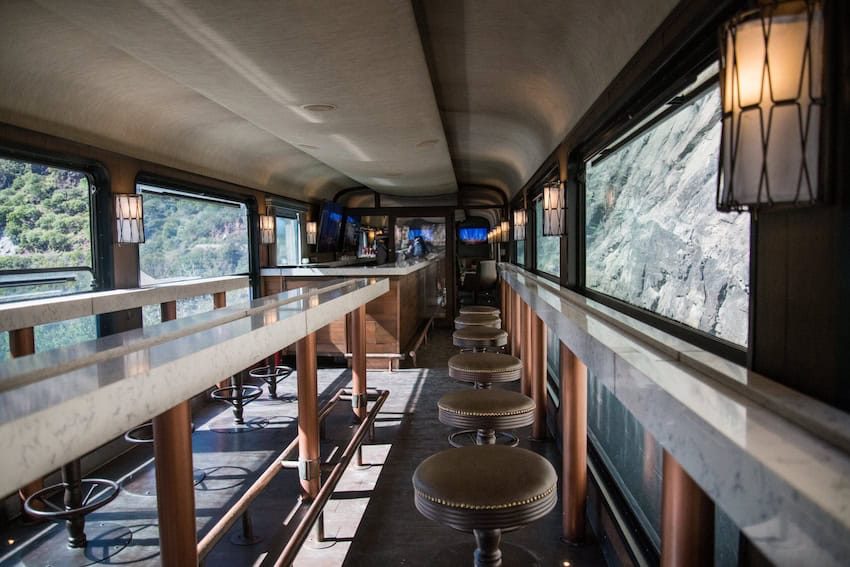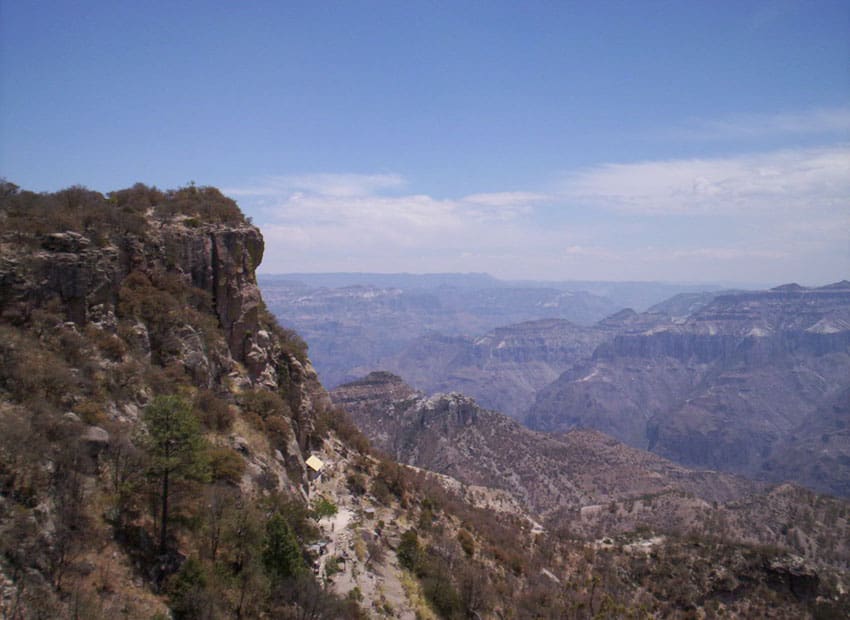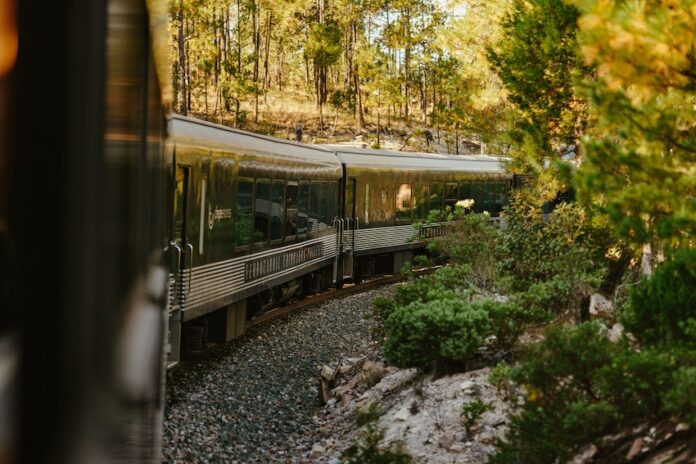The north of Mexico doesn’t often get the tourist love it deserves. Maybe it’s the lack of flashy landmarks, or the fact that many parts of it are remote and rugged, hard to access without a long drive or an even longer detour. I’m thinking of states like Chihuahua, Coahuila, Sonora and my native Durango — the quieter, often-overlooked corners of the country that rarely make the travel postcards.
But maybe that’s starting to change. The Copper Canyon, or Barranca del Cobre, was recently named one of Mexico’s top tourism destinations for 2025. As a proud Norteña, I’ll gladly take the win, even if the canyon straddles Sinaloa and Chihuahua more than my home state. It still feels like a shared treasure.

The Copper Canyon is one of the most breathtaking regions in northwest Mexico, a dramatic landscape of desert, mountains and deep gorges. And the best way to experience it is by train: the Ferrocarril Chihuahua al Pacífico, more affectionately known as El Chepe.
A brief history of El Chepe
Tucked deep within the Sierra Madre Occidental, the Copper Canyon is one of Mexico’s greatest natural wonders, a vast system of twenty interconnected canyons carved over millions of years by six rivers. In scale, it surpasses even the Grand Canyon, stretching more than four times its size and plunging deeper in certain spots. Despite the name, the canyon isn’t named for copper mining but for the greenish, copper-like sheen of its steep walls.
Constructing a railway through this remote terrain was no small feat. While many infrastructure projects take longer than expected, El Chepe took it to another level. Construction began in 1898 and faced delay after delay, including during the Mexican Revolution. When the railway was finally completed in 1961, it had taken over six decades and roughly US $90 million to build, a huge effort for the time.
The finished railway is an engineering marvel. The railway stretches over 650 kilometers, winding through terrain that remains inaccessible by road. It spans 39 bridges, passes through 86 tunnels and climbs to elevations of nearly 2,500 meters above sea level, linking Mexico’s northern interior with the Pacific coast.
The Rarámuri people, whose Spanish name — Tarahumara — graces the surrounding mountains, continue to live in the canyons much as they have for generations. Along the train route, some now share their traditions, crafts and food with travelers, offering a glimpse into a way of life shaped by the rhythms of the land.
What to expect
El Chepe connects the Pacific port town of Los Mochis, Sinaloa, to the inland capital of Chihuahua. But the journey isn’t linear. The most popular and scenic portion runs from Los Mochis to the mountain town of Creel, a nine-hour stretch known as the Chepe Express route. This segment offers the most dramatic canyon views: sweeping cliffs, plunging ravines and hairpin turns through jagged mountains.
To continue onward to Chihuahua city, travelers must transfer to the Chepe Regional, which adds about six more hours to the trip. While it’s less picturesque than the earlier stretch, it completes the historic route through northern Mexico.
The train stops in several towns along the way, including El Fuerte, Bahuichivo, Posada Barrancas, Divisadero and Creel before reaching Chihuahua city. Many travelers choose to disembark in Creel and explore the surrounding area for a few days before making the return trip west. El Chepe makes this kind of itinerary possible with a flexible ticketing system that allows up to three stopovers at no extra cost, as long as they’re selected in advance.
This flexibility turns the journey into a slow-travel experience. You can hop off to explore canyon towns, stay overnight and continue on a later train — some travelers spend a full week soaking in the sights.
There’s no shortage of reasons to linger. In Cerocahui, a 17th-century Jesuit town perched near the rim of Barranca de Urique, the canyon’s deepest gorge, you can stroll through vineyards or take in panoramic views. Near the Divisadero station, thrill seekers will find one of the world’s longest zip lines at the Copper Canyon Adventure Park, where the Urique and Tararecua rivers converge. Others prefer to kayak along the forest-lined Fuerte River, surrounded by silence and pine.

For the most comfortable ride, many travelers recommend booking first-class tickets. While more expensive, these include access to panoramic observation cars and better dining options. As for timing, the best months to go are July through September, when the rainy season has painted the canyons in lush greens. In the dry season, the landscape can appear dusty and sparse, and some of its visual magic fades.
Beyond the stunning views, El Chepe feels like an essential step in getting to know the north — this vast, rugged region that’s so often overlooked.
Ready for the ride?
Whether you’re drawn by the canyon’s vast beauty, Indigenous history or the simple romance of train travel, El Chepe is one of Mexico’s most unforgettable journeys, a window into a lesser-known side of the country. So if you’ve never explored the north, consider this your invitation.
The Copper Canyon is waiting.
Rocio is based in Mexico City and is the creator of CDMX iykyk, a newsletter designed to keep expats, digital nomads and the Mexican diaspora in the loop. The monthly dispatches feature top news, cultural highlights, upcoming CDMX events & local recommendations. For your dose of must-know news about Mexico, subscribe here.
